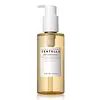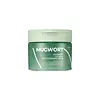What's inside
What's inside
 Key Ingredients
Key Ingredients

No key ingredients
 Benefits
Benefits

 Concerns
Concerns

 Ingredients Side-by-side
Ingredients Side-by-side

Ethylhexyl Stearate
EmollientCetyl Ethylhexanoate
EmollientSorbeth-30 Tetraoleate
EmulsifyingCaprylic/Capric Triglyceride
MaskingCitrus Aurantium Bergamia Fruit Oil
MaskingCentella Asiatica Extract
CleansingSimmondsia Chinensis Seed Oil
EmollientOlea Europaea Fruit Oil
MaskingHelianthus Annuus Seed Oil
EmollientEthylhexylglycerin
Skin ConditioningPelargonium Graveolens Flower Oil
MaskingRosa Damascena Flower Oil
MaskingLimonene
PerfumingLinalool
PerfumingEthylhexyl Stearate, Cetyl Ethylhexanoate, Sorbeth-30 Tetraoleate, Caprylic/Capric Triglyceride, Citrus Aurantium Bergamia Fruit Oil, Centella Asiatica Extract, Simmondsia Chinensis Seed Oil, Olea Europaea Fruit Oil, Helianthus Annuus Seed Oil, Ethylhexylglycerin, Pelargonium Graveolens Flower Oil, Rosa Damascena Flower Oil, Limonene, Linalool
Cetyl Ethylhexanoate
EmollientCaprylic/Capric Triglyceride
MaskingEthylhexyl Palmitate
EmollientPEG-20 Glyceryl Triisostearate
EmollientSynthetic Wax
AbrasivePEG-10 Isostearate
EmulsifyingSorbitan Sesquioleate
EmulsifyingCI 77288
Cosmetic ColorantCaprylyl Glycol
EmollientCI 77499
Cosmetic ColorantJuglans Regia Seed Oil
Skin ConditioningHelianthus Annuus Seed Oil
EmollientVitis Vinifera Seed Oil
EmollientIndigofera Tinctoria Extract
MaskingEthylhexylglycerin
Skin ConditioningPrunus Amygdalus Dulcis Oil
Skin ConditioningOenothera Biennis Oil
EmollientSimmondsia Chinensis Seed Oil
EmollientArtemisia Princeps Leaf Water
MaskingWater
Skin ConditioningButylene Glycol
HumectantPhytosterols
Skin ConditioningPanthenol
Skin ConditioningMelaleuca Alternifolia Leaf Oil
AntioxidantCapryloyl Salicylic Acid
ExfoliatingCitric Acid
BufferingSalicylic Acid
MaskingArtemisia Vulgaris Oil
PerfumingGluconolactone
Skin ConditioningArtemisia Argyi Leaf Extract
Skin Conditioning1,2-Hexanediol
Skin ConditioningSodium Hyaluronate
HumectantHydrolyzed Hyaluronic Acid
HumectantSodium Acetylated Hyaluronate
HumectantCetyl Ethylhexanoate, Caprylic/Capric Triglyceride, Ethylhexyl Palmitate, PEG-20 Glyceryl Triisostearate, Synthetic Wax, PEG-10 Isostearate, Sorbitan Sesquioleate, CI 77288, Caprylyl Glycol, CI 77499, Juglans Regia Seed Oil, Helianthus Annuus Seed Oil, Vitis Vinifera Seed Oil, Indigofera Tinctoria Extract, Ethylhexylglycerin, Prunus Amygdalus Dulcis Oil, Oenothera Biennis Oil, Simmondsia Chinensis Seed Oil, Artemisia Princeps Leaf Water, Water, Butylene Glycol, Phytosterols, Panthenol, Melaleuca Alternifolia Leaf Oil, Capryloyl Salicylic Acid, Citric Acid, Salicylic Acid, Artemisia Vulgaris Oil, Gluconolactone, Artemisia Argyi Leaf Extract, 1,2-Hexanediol, Sodium Hyaluronate, Hydrolyzed Hyaluronic Acid, Sodium Acetylated Hyaluronate
 Reviews
Reviews

Ingredients Explained
These ingredients are found in both products.
Ingredients higher up in an ingredient list are typically present in a larger amount.
This ingredient is an emollient, solvent, and texture enhancer. It is considered a skin-softener by helping the skin prevent moisture loss.
It helps thicken a product's formula and makes it easier to spread by dissolving clumping compounds.
Caprylic Triglyceride is made by combining glycerin with coconut oil, forming a clear liquid.
While there is an assumption Caprylic Triglyceride can clog pores due to it being derived from coconut oil, there is no research supporting this.
Learn more about Caprylic/Capric TriglycerideCetyl Ethylhexanoate is an emollient ester. It comes from cetearyl alcohol and 2-ethylhexanoic acid.
Cetyl Ethylhexanoate is an emollient that adds a velvety feel to skin without being greasy or oily. Emollients help trap moisture into your skin, keeping your skin soft and hydrated.
Ethylhexylglycerin (we can't pronounce this either) is commonly used as a preservative and skin softener. It is derived from glyceryl.
You might see Ethylhexylglycerin often paired with other preservatives such as phenoxyethanol. Ethylhexylglycerin has been found to increase the effectiveness of these other preservatives.
Helianthus Annuus Seed Oil is the oil derived from the seeds of a Sunflower. Sunflower seed oil is non-fragrant. It is an emollient, meaning it helps to soften the skin.
Sunflower seed oil contains many fatty acids. The fatty acids found in sunflower seeds include (from highest amount to least): linoleic acid, myristic acid, palmitic acid, stearic acid, arachidic acid, oleic acid, and linolenic acid.
These fatty acids help the skin create ceramides. Ceramides play a role in repairing the skin barrier.
Helianthus Annuus Seed Oil helps moisturize the skin. This in turn helps the skin look more rejuvenated and smoother.
Sunflowers are rich in vitamin E.
Historians believe Indigenous cultures of North America domesticated sunflowers before corn. Thus they relied on sunflower oil for a variety of uses. One such use is moisturizing skin and hair.
Sunflower seed oil may not be fungal acne safe. We recommend speaking with a professional if you have any concerns.
Learn more about Helianthus Annuus Seed OilThis oil comes from the seeds of the desert shrub called Jojoba. It is more commonly known as jojoba oil, a non-comedogenic oil.
Jojoba oil does not contain fragrance and has many fatty-acids, making it a great soothing ingredient.
It also contains Vitamin E, a great moisturizing ingredient. Vitamin E is also an antioxidant and protects your skin against oxidative damage.
This ingredient humectant properties, meaning it helps draw moisture from the air. This helps keep your skin hydrated.
While jojoba has antibacterial properties, it is only able to kill some strains of bacteria.
Studies also show it helps in wound healing. In fact, Indigenous cultures have used jojoba as a moisturizer and to help treat burns for centuries.
Fun fact: Jojoba oil similar to natural human skin sebum, so it has a great effect on dry skin. It is also promising with helping to regulate sebum production.
Due to its fatty acid content, Jojoba oil may not be fungal acne safe. We recommend speaking with a professional if you have any concerns.
Learn more about Simmondsia Chinensis Seed Oil